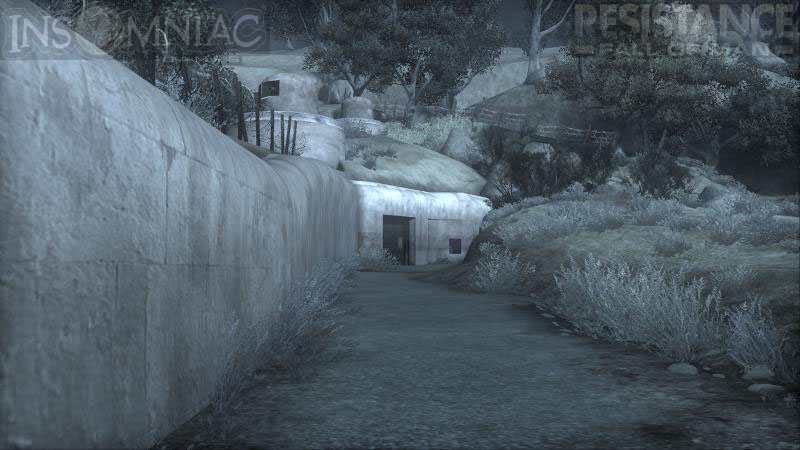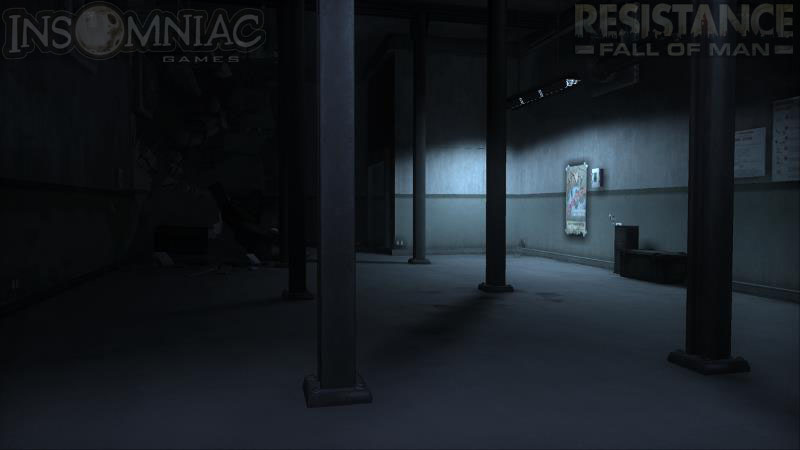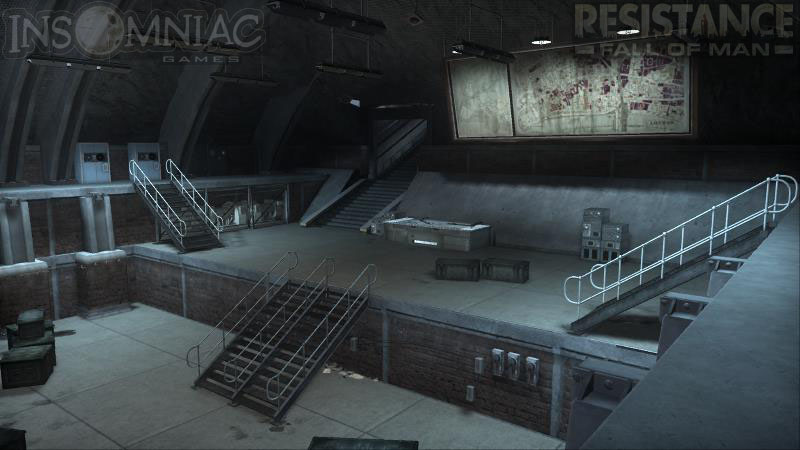Creating the Lighting for Resistance: Fall of Man
Page 5
![]()
Static vs. Dynamic:strong> Some people don't like the concept of light mapping...they consider it an old technology that shouldn't be used anymore. The problem with baking the lighting into a scene is that it's not dynamic, in other words when you shoot out a light, there's no change to the environment. In a perfect gaming world, everything would be dynamic. Any light, anywhere, could be shot out, changing the environment. Any building would be completely destroyable.
I saw once on a forum where a guy was complaining because when you shoot the sandbags, sand doesn't start leaking out. He's got a point, but where do you draw the line? If sand is leaking out of a sandbag, should it start to pile up? Using physics? As the sand leaks out, shouldn't the sandbag start to deflate, getting smaller? Which means the sandbags above it start to shift and fall? All of these things are possible, but is it worth it? The deadlines that are an unavoidable part of the gaming world (unless you're Duke Nukem Forever) mean that you need to concentrate on what's really worthwhile, and there are going to be some things that just don't happen.
In the case of lighting, we do have dynamic lights, but they're used occasionally rather than constantly. So why use light mapping? For a few reasons. 1) light mapping allows us to use as many lights as we want when setting up the lighting. If I want, I can have hundreds of lights in a given area, because when the lightmaps are rendered you're not limited to using only a certain number of lights. By contrast, dynamic lights are expensive...you're limited as to how many you can use. 2) Dynamic lights usually have fake-looking, hard edged shadows. I can have shadows that are much more realistic using lightmaps, complete with shadow color, falloff, and bounce environment fill. I think this gives more realistic results than what can be achieved currently with dynamic lights. 3) The one thing we're still a ways off on is real time global illumination/radiosity. It will happen someday, but for now dynamic lights don't support global illumination. When we render lightmaps, we can use any rendering method we choose, including GI, for much more realistic results.
Of course, lightmaps aren't perfect, and they've got their own limitations, but they're what we're using for now. The best thing to do of course is to combine the two methods whenever possible...light mapping on the areas that are static, and dynamic lights where they'll give the most bang for the buck. That's what we try to do.
Southern Command. Designer: Ken Strickland
Environment Artists: Marcus Lull, Chris Capilli, Tiffany Vongerichten. (Yeah, Tiffany...proof positive that chicks work on videogames and it's not just an urban legend. I know "Tiffany" sounds like a girly-name, but our Tiffany knew Muay Thai, and had a Pit Bull named Harley. 'Nuff said...let's move on.)
Outdoor Lighting: The lighting for outdoor areas is pretty straightforward...a time of day is selected, and you do what you can to convey that look. Your main sources of light will be the sunlight itself, and the fill from the sky. Of course, there's also some cheating that goes on depending on the area the player will be moving through, with additional fill lights or sometimes secondary "suns" in tight areas to throw better shadows, etc.
This shot shows the sky fill on the buildings, with some direct sunlight hitting the upper corners.

Early concept sketch for this area.
You've got more freedom when lighting indoor areas of course...you can decide on the light fixtures themselves, which will dictate the type of lighting in that area, and what will be lit or not lit. In the above shot, a single fluorescent light gives an ominous look to this room.
I like this hallway. You just know that something bad is waiting in that next room.
I think there's an unwritten law somewhere that any time you have a pool table in a scene, you have to have one of those hanging billiard lights over the table. ![]()

Map notes from a designer for lighting some specific areas.
Pipes and machinery make great shadow casters.

Early concept sketch of Southern Comm corridor by Rolf Mohr.
Map room.







